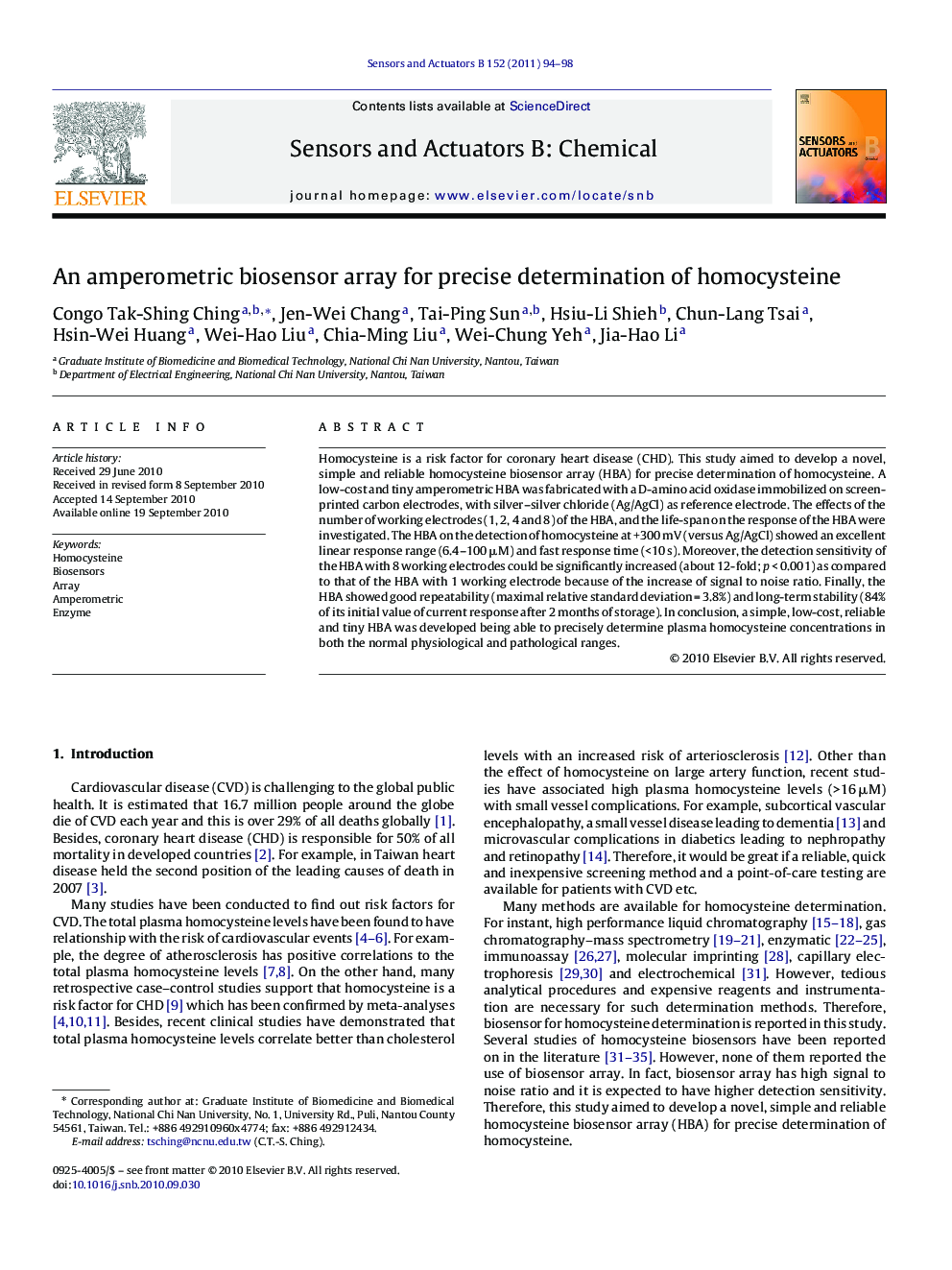| Article ID | Journal | Published Year | Pages | File Type |
|---|---|---|---|---|
| 744669 | Sensors and Actuators B: Chemical | 2011 | 5 Pages |
Homocysteine is a risk factor for coronary heart disease (CHD). This study aimed to develop a novel, simple and reliable homocysteine biosensor array (HBA) for precise determination of homocysteine. A low-cost and tiny amperometric HBA was fabricated with a D-amino acid oxidase immobilized on screen-printed carbon electrodes, with silver–silver chloride (Ag/AgCl) as reference electrode. The effects of the number of working electrodes (1, 2, 4 and 8) of the HBA, and the life-span on the response of the HBA were investigated. The HBA on the detection of homocysteine at +300 mV (versus Ag/AgCl) showed an excellent linear response range (6.4–100 μM) and fast response time (<10 s). Moreover, the detection sensitivity of the HBA with 8 working electrodes could be significantly increased (about 12-fold; p < 0.001) as compared to that of the HBA with 1 working electrode because of the increase of signal to noise ratio. Finally, the HBA showed good repeatability (maximal relative standard deviation = 3.8%) and long-term stability (84% of its initial value of current response after 2 months of storage). In conclusion, a simple, low-cost, reliable and tiny HBA was developed being able to precisely determine plasma homocysteine concentrations in both the normal physiological and pathological ranges.
